Most go-to-market teams already use demo automation software. It’s table stakes at this point. But just having a tool in place doesn’t mean it’s doing its job well.
You can have the best sales pitch in the world, but if you don’t know what happens after your reps pick up the phone, you’re flying blind.
The best outbound call tracking software gives you visibility into what’s working, what’s not, and where deals are stalling. It helps you pinpoint which calls lead to conversions, which scripts resonate, and which reps need coaching. Yet too many teams still rely on outdated methods or scattered systems that don’t connect the dots between outbound activity and actual results.
I dug into the top outbound call tracking tools to find the ones that offer real clarity, not just call logs. I reviewed G2 ratings, compared features across platforms, and looked at how sales and support teams are using these tools to improve outreach and close more deals.
Whether you’re a startup dialing for your first few customers or a large team optimizing high-volume outbound campaigns, this guide will help you find the best call tracking software to match your workflow and boost your results.
10 best outbound call tracking software: My picks for 2025
-
HubSpot Sales Hub: Best known for CRM with built-in automation
Streamlines sales outreach with email tracking, pipeline views, task automation, and meeting scheduling ($45/mo) -
Salesforce Sales Cloud: Best known for customizable enterprise CRM
Offers robust pipeline tracking, forecasting, and deep integrations tailored for complex sales teams ($25/user/mo) -
OpenPhone: Best known for modern business calling and texting
Gives reps a clean interface for calls, SMS, and shared numbers, with CRM and help desk integrations ($15/user/mo) -
Salesloft: Best known for multichannel sales cadences
Helps teams automate email, call, and LinkedIn workflows, with real-time analytics and coaching tools. -
Close: Best known for built-in calling and email for inside sales
All-in-one CRM with fast dialing, email automation, and smart follow-ups for high-velocity teams ($29/user/mo) -
Nooks: best known for AI-powered parallel dialing
Speeds up outbound with multi-line dialing, live coaching, and lead routing to boost rep efficiency -
JustCall: Best known for cloud phone and SMS for sales
Includes power dialers, call recordings, SMS automation, and seamless CRM integrations ($29/user/mo) -
ZoomInfo Sales: Best known for rich B2B contact and intent data
Gives sales teams verified contact info, buying signals, and account insights to improve targeting. -
Apollo.io: Best known for lead database with outreach tools
Combines prospecting, email sequencing, and calling in one platform to run outbound at scale ($49/user/mo) -
Aircall: Best known for cloud calling with CRM integration
A flexible phone system with live coaching, analytics, and plug-and-play CRM syncing ($30/user/mo)
* These best outbound call tracking software are top-rated in their category, according to G2 Grid Reports. Prices for some of these tools are available on request.
My 10 best outbound call tracking software picks for 2025
While testing and comparing these tools, it became clear how much they optimize outbound outreach. They give reps real-time visibility into call activity, improve connect rates, and help teams follow up with precision and speed.
According to 360iResearch, the global call tracking software market is projected to reach $2.12 billion by 2030, growing steadily as more businesses prioritize data-backed calling strategies.
If you’re wondering which tool helps reps hit their daily dial goals, which one provides the best analytics for call outcomes, or which platform integrates cleanly with your CRM, read on, and you’ll be sure to find out.
How did I find and evaluate the best outbound call tracking software?
To identify the top outbound call tracking software, I analyzed real user reviews on G2 to understand how these tools perform in real sales, support, and marketing environments.
I evaluated how each platform supports key use cases, such as tracking outbound call performance, recording and analyzing conversations, syncing with CRMs, or improving team productivity.
I also used AI to sift through user feedback and G2 Grid® Reports to compare call quality, ease of use, reporting depth, and overall satisfaction. This guide includes screenshots from vendor G2 pages to show what the platforms actually look like in action.
I’ve curated this list to help sales and support teams find the right outbound call tracking solution. One that boosts visibility into rep performance, improves follow-ups, and drives better outcomes from every call.
What makes the best outbound call tracking software worth it: My opinion
When evaluating the best outbound call tracking platforms, I focused on features that improve rep productivity, provide actionable insights, and help revenue teams optimize outreach strategies across sales and support functions.
- Automatic call logging and CRM sync: Manual data entry kills momentum. I looked for tools that automatically log calls, notes, and outcomes to your CRM, along with call recordings and follow-up tasks. The best software ensures reps can focus on conversations, not admin work.
- Multi-channel dialer support: Great tools don’t stop at basic outbound calling. I prioritized platforms that support power dialing, predictive dialing, SMS, voicemail drops, and even email sequencing tracking, all in one place. This gives reps flexibility to reach prospects where they’re most responsive.
- Real-time call monitoring and coaching: Coaching is only effective when it’s timely. I looked for platforms with live and inbound call tracking, whisper coaching, and post-call analytics to help managers guide reps in the moment. Features like call scorecards and AI-powered insights help identify patterns at scale.
- Call attribution and tracking: Knowing a call happened is not enough. You need to know what drove it. I favored tools that let teams attribute calls to specific campaigns, keywords, or channels. This visibility helps marketers double down on what’s working and helps sales teams optimize outreach timing.
- Compliance and recording controls: Call tracking often involves legal considerations. I evaluated platforms for call recording consent prompts, regional compliance support (like GDPR and TCPA), and admin-level controls for access and retention. Security and trust are table stakes, especially in regulated industries.
- Integrations with CRM and enablement tools: The best outbound call tracking software fits into your existing workflow. I looked for tools that sync with Salesforce, HubSpot, and other CRMs, plus integrations with conversation intelligence and sales enablement platforms for smoother rep workflows and better reporting.
- Allow users to place outbound calls directly from the platform
- Track and log call interaction data such as duration, outcomes, recordings, and engagement insights
*This data was pulled from G2 in 2025. Some reviews have been edited for clarity.
1. HubSpot Sales Hub: Best known for CRM with built-in automation
HubSpot Sales Hub is a modern sales software designed to help growing teams build a pipeline, deepen relationships, and close more deals faster. According to G2 Data, 62% of small businesses use it, which points to its ease of use and ability to support teams without requiring deep technical expertise.
I’ve noticed that HubSpot Sales Hub is often praised for being quick and easy to set up. The simple onboarding process means sales teams can get started right away, cutting down delays and letting them focus on connecting with prospects rather than configuring tools.
One feature that consistently stands out is call tracking. Users mention how effortless it is to log calls, record outcomes, and review recordings. According to several reviewers, this reduces manual effort and ensures sales teams have clear, reliable records of their conversations.
Another common highlight is the ability to add custom properties for contacts and deals. Many G2 users appreciate this flexibility, saying it helps them align the CRM with their unique sales processes. Reviewers note that these fields give sales teams better visibility into deal progress and help them tailor reporting to their goals.
I’ve also seen a lot of positive feedback about mobile note-logging. When sales reps make calls from a mobile device, a pop-up makes it easy to jot down notes instantly. Many reviewers say this saves time and ensures important details aren’t lost, which strengthens follow-ups and customer relationships.
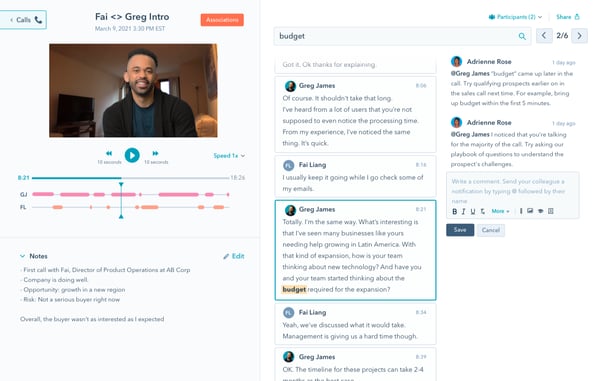
That said, some users raise concerns about pricing. Costs can climb quickly, especially when adding more calling minutes. Still, many agree that the advanced features available at higher tiers deliver strong value, though several suggest that more flexible pricing or bundled minutes would make the platform even more attractive.
Lists don’t always refresh right away, and a few reviewers mentioned they’d like a manual refresh option to make things smoother. While not a deal-breaker, this improvement could further streamline day-to-day workflows.
Overall, based on the reviews I’ve read, HubSpot Sales Hub is widely praised for its accessibility, useful sales features, and ability to help teams build a pipeline and close deals faster.
What I like about HubSpot Sales Hub:
- It feels quick and easy to set up, so teams can get going without a lot of technical hassle. G2 users seemed to notice this, too.
- The call tracking makes it simple to log conversations and outcomes, something I’ve seen mentioned often as a big time‑saver.
What G2 users like about HubSpot Sales Hub:
“I love how intuitive and user-friendly the platform is. It didn’t take much training for our team to get the hang of it, and now it’s part of our daily workflow. The pipeline view is especially helpful for keeping track of deal stages, and the automation features save us a ton of time. I also appreciate how well it integrates with our other tools like Gmail, Zoom, and Slack; it helps us work smarter, not harder.”
– HubSpot Sales Hub Review, Izel A.
What I dislike about HubSpot Sales Hub:
- The pricing can climb fast, especially if you need more calling minutes, and I’ve noticed some reviewers wish for more flexible options.
- Lists don’t always refresh right away, and from what I’ve read, people think a manual refresh button would make things smoother.
What G2 users dislike about HubSpot Sales Hub:
“While HubSpot Sales Hub is great overall, the pricing can quickly become a concern for small businesses. Many advanced features like custom reporting, multiple pipelines, or automation workflows are locked behind higher-tier plans, which can feel expensive when you’re just starting out.”
– HubSpot Sales Hub Review, Jackson R.
2. Salesforce Sales Cloud: Best known for customizable enterprise CRM
Salesforce Sales Cloud brings together the power of humans with agents at every step of the sales cycle. It is widely adopted by growing businesses.
According to G2 Data, 46% of its users are from mid-market companies and 34% from enterprise organizations, showing that its scalability makes it well-suited for handling both complexity and growth.
One feature that comes up often is the lead organization. Many reviewers appreciate how the system automatically groups leads into hot or cold categories, helping sales teams quickly prioritize outreach. This not only saves time but also ensures reps focus on the prospects most likely to convert.
I’ve also seen strong feedback about outbound call dispositions. Users describe the process as fast and reliable, noting that logging call outcomes is straightforward and ensures follow-up details remain accurate. According to several reviews, this consistency helps teams keep their momentum throughout the sales cycle.
Another highlight is the centralized dashboard. Reviewers say it provides real-time updates on progress and performance while making it easy to share insights, track activities, and coordinate efforts across teams. This collaborative structure drives efficiency and keeps everyone aligned toward sales goals.
Customer support is another area that consistently earns praise. Multiple reviewers mention that Salesforce’s support team responds quickly with clear answers, often walking them through solutions step by step. This level of hands-on support makes both adoption and daily use smoother for sales teams.
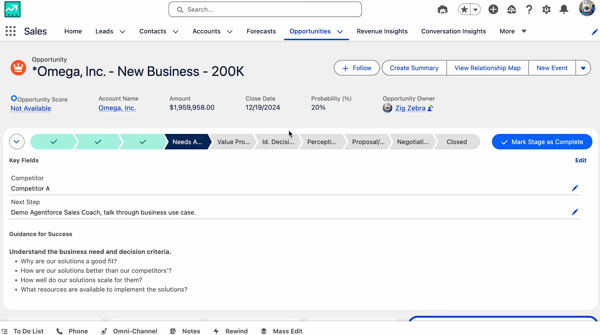
Of course, some users feel that the lead prioritization tools could be more intuitive. They suggest clearer visual cues, like solid colors, to distinguish new leads from older ones, which would make navigation faster. Still, most agree that Salesforce’s existing lead management capabilities remain a strong advantage.
The learning curve can feel steep at first. Several reviewers note it takes time before the platform’s full value really clicks, but once mastered, the robust feature set delivers powerful results for growing sales teams.
Overall, based on the reviews I’ve read, Salesforce Sales Cloud is trusted for its ability to streamline sales processes.
What I like about Salesforce Sales Cloud:
- The way it organizes leads into hot and cold categories makes prioritizing outreach so much easier, something I’ve seen mentioned often in reviews.
- Customer support stands out for being quick and hands‑on, and G2 users seemed to really value how helpful the team is during setup and daily use.
What G2 users like about Salesforce Sales Cloud:
“Salesforce Sales Cloud makes it really easy for me to manage my leads, contacts, and deals all in one place. I like how I can see where each deal is in the pipeline, get reminders for follow-ups, and track my tasks and activities. The dashboards and reports are also super helpful. I can quickly check my performance and know what to focus on next. It saves me time and helps me stay organized every day.”
– Salesforce Sales Cloud Review, Viran K.
What I dislike about Salesforce Sales Cloud:
- The lead prioritization could use clearer visual cues, and I’ve noticed some reviewers wish navigation felt a bit faster.
- The learning curve can feel steep at first, and from what I’ve read, it takes some time before the platform’s full value really clicks.
What G2 users dislike about Salesforce Sales Cloud:
“Some parts of the interface can be overwhelming or unintuitive, especially for newer users. At times, it’s slow to load or gets laggy during peak hours, and setting up custom reports or dashboards can require help from admins. The learning curve is a bit steep for advanced features, and some processes feel more complex than necessary.”
– Salesforce Sales Cloud Review, Lemuel P.
3. OpenPhone: Best known for modern business calling and texting
OpenPhone is a collaborative phone system for teams that integrates calls, texts, and contacts into an intuitive app that works seamlessly across devices. Many reviewers highlight the cross-device flexibility, saying it makes it easy to stay connected whether in the office or on the go.
My favorite feature is the rich set of contact properties available. Reviewers note that this makes it simple to organize contacts nationwide, whether by area or trade type, so teams can locate the right person more quickly and stay organized.
Another feature that often stands out is the ability to add custom tags and notes to contacts. Users say this keeps important client details close at hand, making them feel more prepared for calls and follow-ups. According to feedback, this small but powerful capability streamlines everyday workflows.
I also see frequent praise for AI-powered call summaries. Several reviewers mention that these summaries save time and improve accuracy by capturing key points without requiring teams to replay recordings. G2 Data shows that 83% of users highlighted this as one of their favorite features.
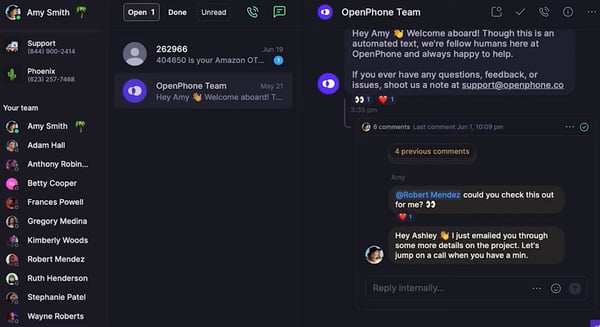
Some reviewers would like to see more native integrations — especially with CRM tools. While the current integrations work well, expanding the options could add even more value by connecting OpenPhone more deeply into existing sales and support stacks.
A few people also mentioned delays in voicemail notifications. While minor, these hiccups can interrupt what is otherwise described as a seamless experience.
Overall, based on the reviews I’ve read, OpenPhone earns strong praise for its flexibility, contact management, and AI summaries. It’s especially valued by teams looking for a phone system that blends simplicity with smart, time-saving features.
What I like about OpenPhone:
- Having calls, texts, and contacts in one place feels really convenient, and G2 users seemed to appreciate how smoothly it works across devices.
- The AI‑powered call summaries are a big time‑saver, and I’ve often seen people mention how much they help with accuracy and follow‑ups.
What G2 users like about OpenPhone:
“I’ve been using OpenPhone for business communication, and I’m genuinely impressed with how clean and intuitive the platform is. The simplicity of the interface makes it incredibly easy to manage calls, texts, and voicemails without any clutter or unnecessary features. It integrates smoothly with my workflow, and I appreciate how straightforward it is to set up and navigate. If you’re looking for a no-nonsense, professional phone system for your business, I would absolutely recommend OpenPhone. It does exactly what it promises, reliably and efficiently.”
– OpenPhone Review, Renee B.
What I dislike about OpenPhone:
- I’ve noticed some reviewers wish there were more native CRM integrations to make the platform even more useful.
- A few people mentioned delays in voicemail notifications, which may be minor but still break the otherwise seamless experience.
What G2 users dislike about OpenPhone:
“There are no real downsides to using OpenPhone, unless you’re trying to select a specific phone number, as the available numbers are picked at random. I also faced a challenge where 2 of my 3 numbers were identified as “Scam Likely.” This issue prompted me to reach out to an outside service to re-label each number.”
– OpenPhone Review, Timothy P.
Sync demo engagement data with your marketing automation platform to trigger timely follow-ups and personalize nurture campaigns based on what prospects actually interacted with.
4. Salesloft: Best known for multichannel sales cadences
Salesloft uses purpose-built AI to help market-facing teams prioritize and take action on what matters most, from first touch to upsell and renewal. According to G2 reviews, its AI-driven guidance is widely seen as a key enabler for keeping sales processes efficient and outcome-focused.
One standout capability is the automation of multi-step outreach sequences, including emails, calls, and social touchpoints. Reviewers often mention that this creates more consistent communication while freeing up time for higher-value conversations. Several note that it also reduces the risk of losing track of prospects in busy pipelines.
I frequently see praise for the platform’s daily to-do lists. Users highlight how these lists clearly indicate who to contact and when, giving them a focused plan for their day and helping them stay on top of pipeline activity.
G2 Data shows that 80% of reviewers praised Salesloft’s segmentation tools, saying they make outreach more targeted and effective. Reviewers point out that tailoring cadences by industry, persona, or deal stage helps increase response rates and improve overall engagement.
Another feature users value is calendar integration. Many describe how easy it is to schedule calls, demos, and follow-ups without switching between tools. They emphasize that this prevents double-booking and keeps workflows smooth, which saves both time and frustration.
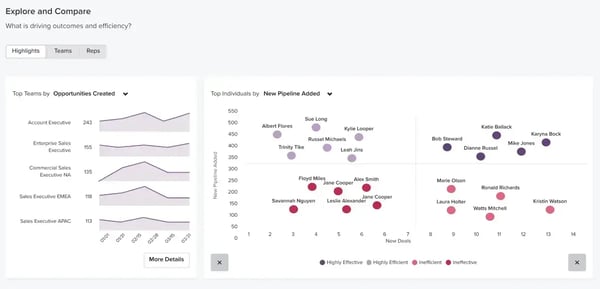
Some reviewers mention that call-skipping in cadences could be improved. They’d prefer the system automatically skip calls when a prospect can’t be reached instead of requiring manual updates. Even so, many note that Salesloft’s flexibility allows them to create workarounds and adapt processes effectively.
A few users also talk about alert fatigue, saying that too many low-priority notifications can make it harder to spot the most important ones. While this doesn’t outweigh the benefits, it’s an area where refinements could further enhance the experience.
Overall, based on the reviews I’ve read, Salesloft stands out as a powerful partner for sales teams.
What I like about Salesloft:
- The AI guidance makes it easier to manage multiple opportunities without missing steps, something I’ve seen praised often in G2 reviews.
- I like how the daily to‑do lists give a clear plan for outreach, and G2 users seemed to value how it keeps them focused and organized.
What G2 users like about Salesloft:
“I love using Salesloft because it allows me to start work every day with a clear path of the tasks I need to get done. I especially love the Rhythm tab, which helps me decide which tasks to prioritize. It’s very user-friendly; it was easy for me to learn initially and is simple to navigate. Customer support responds quickly when I have an issue, and it integrates seamlessly with Salesforce and Lusha.”
– Salesloft Review, Reilly S.
What I dislike about Salesloft:
- Call‑skipping in cadences feels a bit clunky since it isn’t automatic, and I’ve noticed reviewers saying manual updates can slow things down.
- Some users talk about alert fatigue from too many low‑priority notifications, which makes it harder to spot the important ones.
What G2 users dislike about Salesloft:
“I don’t like how it measures personalization. I could create a cadence specifically for a certain position at a certain company, but because I don’t change the cadence itself, it marks it as not personalized. This affects how I view my data and makes it harder to improve my outreach.”
– Salesloft Review, Karim H.
5. Close: Best known for built-in calling and email for inside sales
Close is a CRM that I’ve noticed is especially popular with small businesses. G2 Data shows that 79% of its users come from this segment, which makes sense given how the platform delivers efficiency without unnecessary complexity, making it a natural fit for leaner teams.
One feature that consistently earns praise is the AI note taker. Several reviewers describe how it automatically records what was discussed during calls, allowing users to focus fully on the conversation instead of worrying about taking notes. Many say this is especially helpful during longer calls, ensuring accurate follow-ups and better customer interactions.
Another standout capability is how Close boosts daily call volume. Reviewers often mention how easy the system makes it to keep dialing, helping them reach more prospects in less time. For many teams, this productivity gain is seen as a major competitive advantage.
Reviewers also highlight Close’s ability to track revenue by contact, noting how simple it is to see the income generated from each person and move them through the pipeline with clarity. This visibility into financial impact makes it easier for teams to prioritize efforts and measure success.
I frequently hear praise for the platform’s smooth integrations and simple setup. Users often point out that connecting Close with their existing tools is hassle-free, and its straightforward implementation means they can get started quickly without technical expertise. Many describe this accessibility as a key benefit for smaller teams without dedicated IT support.
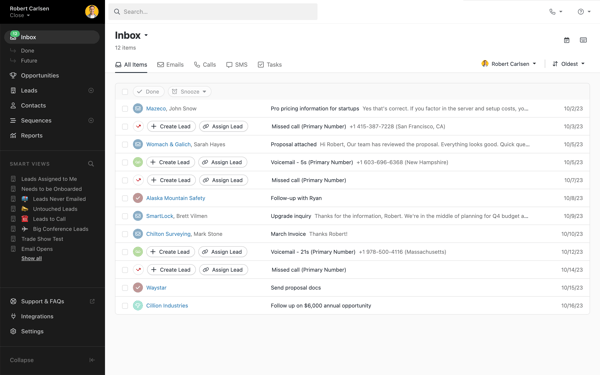
I’ve also seen a few mentions of voicemail handling issues. Some users say the system doesn’t always register when a voicemail ends, occasionally requiring a quick refresh. Still, they emphasize that this is a minor hiccup compared to the platform’s overall reliability.
Some reviewers also wish there were one-click calling from lead pages, which would smooth workflows and reduce extra steps. While not a deal-breaker, this is an area where added convenience could further strengthen the experience.
Based on the reviews I’ve read, Close stands out for its AI-driven call notes, productivity-focused calling features, and simple integrations. These make it a strong CRM choice for small businesses that need power without added complexity.
What I like about Close:
- The AI note-taker makes it easier to stay present during calls, and reviewers say it’s especially helpful for keeping follow‑ups accurate.
- I like how the system helps boost daily call volume, something G2 users often mention as a big productivity win.
What G2 users like about Close:
“I’m fine-tuning my sales funnel at the moment, but what Close allows you to do with the people you’re processing is great. You can see the income generated from each person, and for the most part, they can be moved along my process fairly easily. The best part for me is having categories where I can place leads after we’ve completed a job or if they haven’t closed. I also do a bit of calling with it. I purchased a number just to try it out, and I’m slowly getting used to it.”
– Close Review, Rod M.
What I dislike about Close:
- Some people wish there were one‑click calling directly from lead pages, which would make workflows smoother.
- I’ve noticed a few mentions of voicemail handling being a bit finicky at times, though most agree it’s more of a small hiccup than a real drawback.
What G2 users dislike about Close:
“I’m looking at overall stats for reps so I can have an organized view of our metrics, for example, how many leads actually picked up the phone on a given day. I’d also like to have an overview of where the reps are throughout the day, so I know when and where to jump in and help, similar to how Salesforce provides a dashboard.”
– Close Review, Jacob P.
6. Nooks: Best known for AI-powered parallel dialing
Nooks is an AI sales assistant platform that many reviewers say transforms how their teams work, making outreach more efficient and effective. Its focus on AI-driven productivity has earned it strong adoption among outbound sales teams looking to scale without sacrificing quality.
One feature that consistently stands out is the Auto-Dialer. According to G2 Data, 96% of users praise this capability for helping reps power through high call volumes without burning out. By removing dialing fatigue, salespeople can focus their energy on meaningful conversations, which significantly boosts daily productivity.
Another capability frequently highlighted is Outbound Call Tracking. Users say it provides clear performance insights that make it easier to coach reps, identify best practices, and adjust messaging in real time. This visibility supports smarter decision-making and continuous improvements in outreach quality.
Based on user feedback, what really sets Nooks apart is its Virtual Workspaces. Many describe these as digital bullpens where teams can collaborate, have shadow calls, and learn from each other in real time. Reviewers emphasize that this recreates in-office energy in a remote setting, boosting both morale and team performance.
I’ve also noticed consistent praise for the platform’s intuitive interface. Users say it feels smooth and even enjoyable to use—an important advantage given the demanding nature of outbound sales. This user-friendly design appears to drive higher daily engagement and adoption across teams.
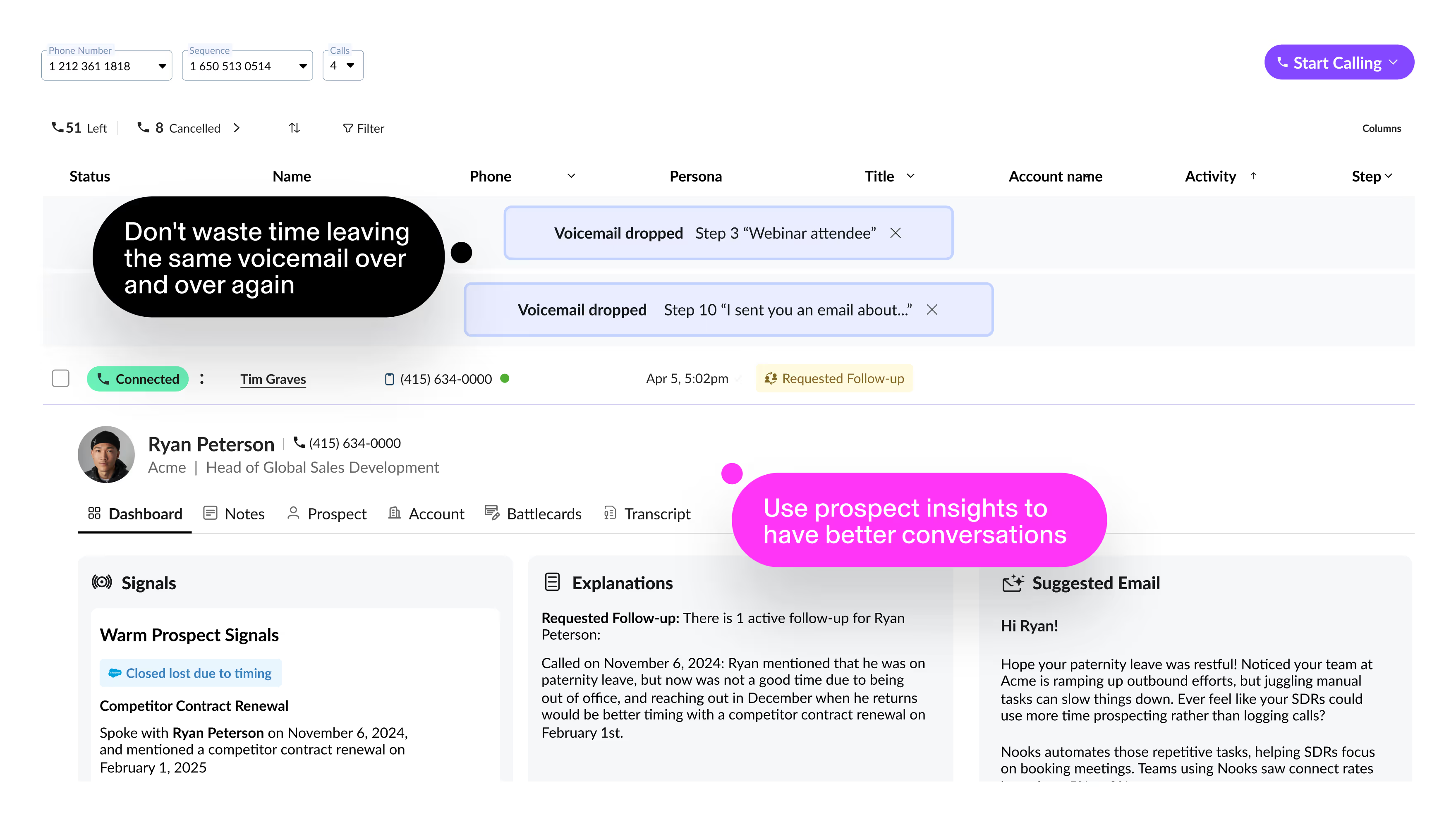
Some reviewers mention wanting more number selection options for one-off or return calls, as well as built-in emailing or scheduling. Still, many agree that Nooks’ integration with Outreach already streamlines these workflows effectively.
A few people also noted occasional call connectivity or disposition glitches, though they added that support resolves these quickly and reliably. While minor, these technical issues show there’s still room for polish.
Overall, based on the reviews I’ve read, Nooks stands out as a powerful solution for outbound sales teams. It combines high-volume dialing, collaboration, and coaching features in a single, easy-to-use platform.
What I like about Nooks:
- The Auto‑Dialer makes it easier to handle high call volumes without burning out, and I’ve noticed reviewers say it helps them focus more on meaningful conversations.
- I really like Virtual Workspaces, which G2 Users often highlight as a way to recreate that in‑office energy and make collaboration feel more natural.
What G2 users like about Nooks:
“Unlike tools like Orum that are primarily focused on high-speed parallel dialing, Nooks combines dialer, data, analytics, and coaching in a single workspace, meaning reps don’t have to jump between tools. The real-time team visibility, conversation intelligence, and Slack-style coaching features make it feel more collaborative and agile.”
– Nooks Review, Carlos M.
What I dislike about Nooks:
- A few people mention occasional glitches with call connectivity or dispositions not marking correctly, though most say support resolves them quickly.
- Some reviewers wish they could choose which number to call from for one‑off calls, and a few mentioned built‑in emailing or scheduling would add convenience.
What G2 users dislike about Nooks:
“I do wish we could have all of our SFDC details on the customer page for each person we’re calling, so we wouldn’t need multiple tabs open to keep track of where we left off with the prospect. But it’s not too bad.”
– Nooks Review, Nina H.
7. JustCall: Best known for cloud phone and SMS for sales
JustCall is an AI-powered business communication platform, especially popular with small businesses. G2 Data shows that 61% of its users come from this segment, and many reviewers say the platform feels accessible and effective from day one, which explains its strong adoption in this space.
One feature that gets frequent praise is the graph view for call counts. Users highlight how this gives them an instant snapshot of daily performance without needing to dig into detailed reports, making progress tracking simple and efficient.
Another standout is seamless CRM integration. Multiple reviewers mention that being able to dial directly from their CRM saves time and keeps all communications in one place. Many note that this streamlined workflow eliminates extra steps and makes outreach more efficient.
I’ve also noticed positive feedback on JustCall’s user-friendly interface. Reviewers often say managing contacts across regions feels straightforward, with a layout that balances ease of use and robust capabilities. For small teams, this design helps avoid overwhelm while still providing the tools they need.
Another benefit that is often mentioned is quick access to customer information and call history. Having this context readily available makes conversations more personal and informed, helping reps strengthen relationships across touchpoints.

Some reviewers do mention occasional mobile app glitches, like call logs or notifications not syncing right away. Most describe these as minor issues that don’t disrupt daily use, though many suggest more frequent updates could bring the mobile experience in line with the smooth desktop version.
Setting up advanced call flows can also feel tricky at first. From what I’ve read, step-by-step guidance would make onboarding smoother and help teams take full advantage of the feature set more quickly.
Overall, based on the reviews I’ve read, JustCall is seen as a strong fit for small businesses seeking a simple yet capable communication tool.
What I like about JustCall:
- The call count graphs make it easy to see daily performance at a glance, which reviewers found really helpful.
- Being able to dial right from a CRM keeps everything in one place, and I’ve seen many users say it saves them a lot of time.
What G2 users like about JustCall:
“We’ve had just a heckin’ rough time getting our telephony sorted out in Salesforce. JustCall is the one tool that actually allows us to review the sales team’s calls with ease and speed. The transcription feature is genuinely useful. Getting it set up was pretty painless, at least at a basic functionality level. Customer support is genuinely helpful, though it can take a minute to get a hold of them. But they’ve never failed to resolve my issues.”
– JustCall Review, Jonathan Killstring H.
What I dislike about JustCall:
- The mobile app can be a little glitchy, with call logs or notifications not always syncing right away, as G2 users also pointed out.
- Setting up advanced call flows feels tricky at first, and from what I’ve read, step-by-step guidance would make onboarding smoother.
What G2 users dislike about JustCall:
“So far, we haven’t encountered any major issues. There have been a few instances where new code deployments caused problems with our existing pages mapped into the tool. However, we’ve seen Saleo’s roadmap includes using AI to detect and automatically remap changes. Once that’s in place, it should eliminate the need for manual QA entirely.”
– JustCall Review, Ayush A.
8. ZoomInfo Sales: Best known for rich B2B contact and intent data
From my review of G2 feedback, I’ve noticed that ZoomInfo Sales is widely trusted for combining a company’s own data with its vast database powered by generative AI. Many reviewers say this makes it easier to uncover the right prospects and insights while cutting through the noise.
A feature that consistently stands out is automated outreach through workflows. Users highlight how creating prospect lists and setting up touchpoints saves them hours each week. I’ve read several comments noting that this prevents leads from slipping through the cracks while making outreach more consistent and scalable.
Reviewers also value the platform’s in-depth research capabilities. Having company details, org charts, and direct dials in one place means less switching between tools. According to G2 Data, 80% of users praise ZoomInfo’s reporting features, which they say give a clear view of pipeline progress and success metrics.
I’ve also seen strong feedback for the Chrome Extension. Many reviewers mention how it provides accurate contact data right where they’re working on LinkedIn, within Outreach, or while preparing for a call. This quick access is described as a major advantage for reaching decision-makers efficiently.
Another area gaining attention is ZoomInfo’s generative AI tools. Reviewers highlight features like AI-powered call summaries, intelligent dashboards, and lead intelligence insights, which sharpen their view of the pipeline and support faster, smarter decision-making.
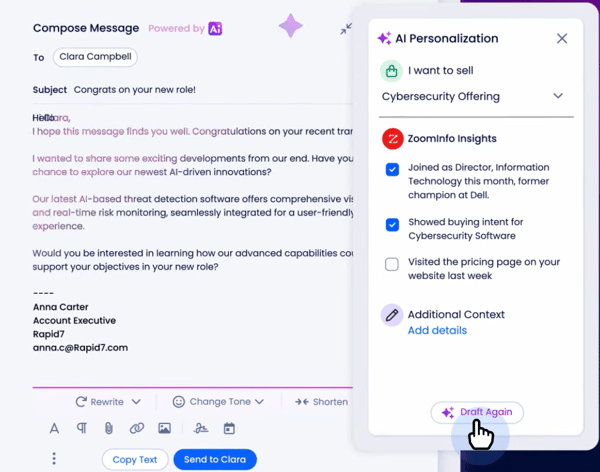
Some users do mention occasional data accuracy issues, such as outdated phone numbers or bounced emails. The encouraging news is that these cases are described as rare, with most data seen as dependable. Many suggest more frequent updates or verification checks to make the already strong database even more reliable.
Integrations are another area where users see room for improvement. While current CRM and call center connections meet most needs, several reviewers would like broader native integrations to further streamline workflows and reduce manual steps.
Overall, based on the reviews I’ve read, ZoomInfo Sales is viewed as a powerful tool for modern sales teams, combining expansive data, automation, and AI insights to drive more efficient and effective prospecting.
What I like about ZoomInfo Sales:
- I found Fable’s speed and flexibility impressive. G2 users say it helps teams quickly create multi-flow demos that showcase different personas, reducing the need for multiple assets.
- The support team stood out to me, and reviewers praise their responsiveness and personalized check-ins, which help users get the most out of the platform.
What G2 users like about ZoomInfo Sales:
“I’ve been using ZoomInfo for over 5 years, and it’s truly one of my favorite tools for sales and data enrichment. The platform offers an extensive and reliable database, and during my time at Anaplan, I’ve explored it in depth, from ZoomInfo University to RingLead enrichment, setting up workflows for account and contact enrichment, and leveraging intent data. There’s so much functionality packed into a single platform, and I genuinely enjoy working with it.”
– ZoomInfo Sales Review, Annpurna S.
What I dislike about ZoomInfo Sales:
- Some users mentioned the lack of an undo function and limited text editor capabilities, which can be frustrating during guide creation.
- I also noticed feedback requesting more advanced customization options for recorded demos to better match branding and layout needs.
What G2 users dislike about ZoomInfo Sales:
“ZoomInfo needs to improve the accuracy of its hierarchy data. It would be helpful if they integrated with tools like Hunter.io to better map recent updates in company employees and organizational structure. CRM integration is still weak and should support more CRM apps, as many companies use different systems. Scoops data and intent data are also a concern, as they’re not provided in real time.”
– ZoomInfo Sales Review, Mohammed A.
9. Apollo.io: Best known for a lead database with outreach tools
Apollo.io is an AI-powered sales platform that helps teams find and engage leads, automate outreach, manage deals, and enrich data without needing multiple tools.
According to G2, 88% of users highlight the strength of its contact data, often noting that its accessibility and accuracy set it apart from other platforms.
Apollo.io’s pipeline management is a feature that reviewers frequently appreciate. Many mention the value of tools like call recording, meeting scheduling, and actionable sales intelligence, which guide them through every stage of the sales process, from first contact to closing deals. Users say these insights help them work more strategically and with greater confidence.
I’ve also seen strong feedback about Apollo.io’s CRM and marketing automation integrations. Reviewers highlight how smoothly the platform syncs data across systems, creating a single source of truth. They note that this prevents duplicate entries, reduces missed updates, and simplifies workflows, making daily operations more efficient.
What stands out across many reviews is the centralized view Apollo.io provides of the pipeline and lead activities. Users share that they can easily run targeted searches, build lead lists, and design sequences with A/B testing and automation. They emphasize that this level of organization makes outreach consistent and tracking performance straightforward.

Some reviewers suggest expanding call functionality with features like call transfers, participant adds, or push-to-conference options. While the current tools are helpful, they believe these additions would make live interactions even more dynamic.
I’ve also read feedback suggesting enhancements to call recording and meeting scheduling, noting that refinements would bring them up to the same high standard as Apollo.io’s other features. Encouragingly, many mention the platform’s steady evolution, which gives them confidence that these improvements are likely to come.
Overall, based on the reviews I’ve read, Apollo.io is seen as a powerful ally for sales teams.
What I like about Apollo.io:
- The contact data feels accurate and accessible, and from what I’ve seen, many G2 users consider this a key strength.
- The pipeline management tools help keep outreach organized and make tracking progress much easier, something I’ve noticed comes up often.
What G2 users like about Apollo.io:
“I’ve been using Apollo.io for my B2B lead research and prospecting work, and it’s truly one of the most powerful tools in this space. I especially appreciate the seamless integration with LinkedIn and the Chrome extension, which saves a lot of time during research. The built-in email verification helps maintain list quality and significantly reduces bounce rates.”
–Apollo.io Review, Khurram S.
What I dislike about Apollo.io:
- Call features could be more dynamic, with some reviewers wishing for options like call transfers or push-to-conference to improve live conversations.
- Meeting scheduling and call recording might need some polish, but users seem hopeful that they will improve as the platform evolves.
What G2 users dislike about Apollo.io:
“At times, the Chrome extension can be a bit slow or buggy, especially when used with LinkedIn. Some data may occasionally be outdated, requiring verification. However, these are minor issues compared to the overall value the platform provides. We’d love to see even more real-time integrations and improvements in mobile usability moving forward.”
– Apollo.io Review, Pankaj.
10. Aircall: Best known for cloud calling with CRM integration
Aircall integrates voice, SMS, WhatsApp, and social media channels into a single platform, with bidirectional syncing across 100+ business apps. Reviewers often praise this connected approach for helping teams manage communication more efficiently in one place.
A feature that gets frequent praise is Aircall’s intuitive interface. Many reviewers highlight how its clean design makes setup and navigation simple, saving time and reducing frustration—especially when onboarding new team members. This ease of use is often described as a major productivity booster.
Another standout is the platform’s analytics on call volume, agent performance, and customer interactions. According to G2, 87% of users praise Aircall’s daily summaries, saying they keep teams informed without needing to dig through detailed reports. These insights are valued for spotting coaching opportunities and improving overall effectiveness.
I’ve also read positive feedback on Aircall’s CRM integration. Reviewers mention that automatic logging of calls and notes eliminates manual data entry, keeping communication records accurate and saving valuable time.
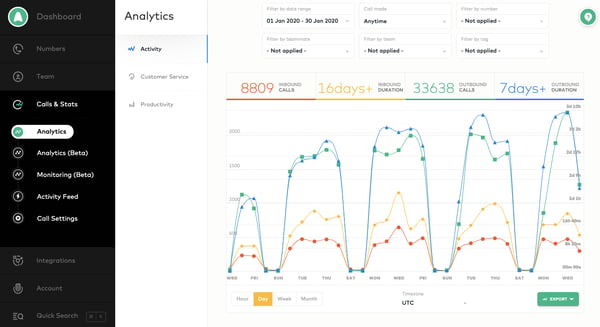
Some reviewers mention limits on SMS/MMS messaging quotas, with extra charges if monthly allowances are exceeded. While this can be a drawback, others note that it encourages mindful usage and appreciate that the platform offers options to scale messaging as needed.
A few users also observed that workflows can feel slower during peak times. Even so, most agree that Aircall’s ability to scale alongside team needs outweighs these occasional slowdowns.
Based on the trends I’ve seen, Aircall is highly regarded for its user-friendly design, powerful analytics, and seamless CRM connectivity, making it a strong choice for businesses looking to unify their communication channels.
What I like about Aircall:
- The interface is clean and intuitive, which many reviewers say makes onboarding and daily use much easier. I’ve seen this mentioned very often by G2 users.
- The analytics and daily summaries help keep teams informed without digging through reports, and G2 users seemed to find this really helpful for coaching.
What G2 users like about Aircall:
“I’m in sales and use Aircall integrated with Salesforce. Aircall has made a huge impact on my productivity. I used to make calls on a cell phone, but now I can click to call directly from the customer record on my laptop, so much less hassle. I also have the app on my phone, so if I’m on the road, I can still make and receive calls. I love that everything is recorded in the specific customer’s file. It’s made it possible for me to sell over $1.5 million a year with a lot less stress.”
–Aircall Review, Michaela N.
What I dislike about Aircall:
- Messaging limits can be frustrating during busy times, and from what I’ve read, some users wish there were more flexible or higher quotas.
- A few reviewers mention occasional slow loading or dropped calls, and it seems like smoother performance would make a big difference.
What G2 users dislike about Aircall:
“The only things I’ve found that would be handy for Aircall are: 1) being able to see the status of my teammates while they’re on a call without having to go into a transfer, and 2) having access to call history while I’m on an active call. There have been several times when I needed to look up names or phone numbers from previous calls, but couldn’t because the history was locked during the active call. Having this functionality would be really helpful in those situations.”
– Aircall Review, Jessica F.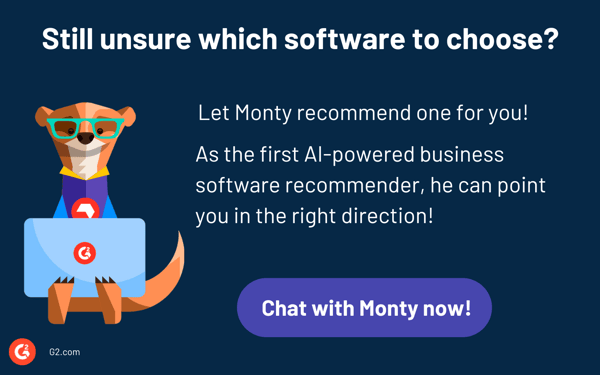
Outbound call tracking software: Frequently asked questions (FAQs)
Have more questions? Find the answers below.
Q1. Where can I find the best outbound call tracking software?
OpenPhone, JustCall, and Aircall are some of the best platforms for tracking outbound calls. They offer features like call logging, recordings, analytics, and CRM integrations to streamline sales workflows.
Q2. Which outbound call tracking tool is the top choice for startups?
Close is ideal for startups. It combines calling, emailing, and CRM in one tool, focusing on high-velocity outbound sales and quick team onboarding.
Q3. What is the best option for tracking outbound calls?
JustCall offers one of the most comprehensive outbound tracking setups. With power dialers, call recordings, call tagging, and real-time analytics, it’s built for outbound sales teams of all sizes.
Q4. What is the best outbound call tracking software for B2B companies?
Salesforce Sales Cloud and ZoomInfo Sales are top picks for B2B. Salesforce provides deep CRM customization and tracking, while ZoomInfo adds verified contact data and intent signals for precision targeting.
Q5. What is the most reliable outbound call tracking solution?
Aircall is known for reliability, with stable call quality, CRM syncing, and live analytics. It’s trusted by both SMBs and enterprise teams for consistent performance.
Q6. What is the leading outbound call tracker for IT services?
Nooks is a strong fit for IT and tech sales teams. It uses AI-powered parallel dialing, rep coaching, and lead routing to speed up outbound activity and improve connect rates.
Q7. What is the best outbound call tracking software for a small business?
OpenPhone is a great choice for small teams. It’s easy to use, offers shared numbers, SMS support, and integrates with popular CRMs and help desks.
Q8. What is a popular outbound call tracking platform for businesses?
Salesloft is widely used across industries. It tracks calls within multichannel cadences, offers live performance analytics, and includes coaching features to improve rep output.
Q9. What is the best software for monitoring outbound calls in our call center?
JustCall and Aircall are built for call centers. They include features like call monitoring, recordings, analytics dashboards, agent performance tracking, and live coaching tools.
Q10. What is the top-rated outbound call tracking app?
Close and Nooks are top-rated apps for their outbound call performance. Close is valued for its ease of use and all-in-one design, while Nooks is praised for dialing speed and coaching tools.
Calling without tracking? That’s not outreach
You’ve seen the tools, now pick one. Without outbound call tracking software, you’re missing the who, what, and how many of your sales outreach. That means blind spots in your funnel, no visibility into rep performance, and zero data to optimize your pitch. A solid tool brings the clarity your team needs to improve conversations and actually hit targets.
Once your calls are tracked and logged, pair them with conversation intelligence software to improve what happens on those calls.















